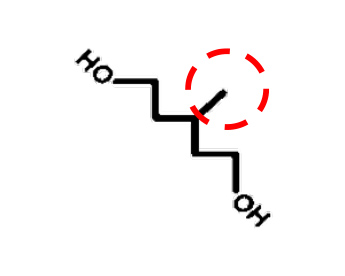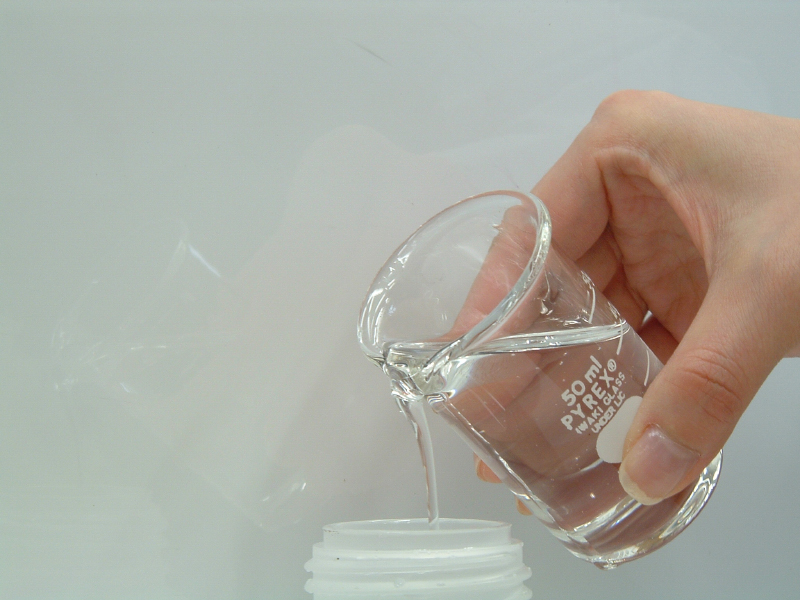KURARAY POLYOL and Diols
- General name
- (3-Methyl-1.5-Pentanediol (MPD), 1,9-Nonanediol (ND))
A raw material for polyurethanes. Offers improved strength and flexibility.
Kuraray offers synthetic diols, 3-methyl-1,5-pentanediol (MPD) and 1,9-nonanediol (ND). These products are produced with Kuraray’s proprietary synthesis technology. A variety of derivatives from these diols are also available under the name KURARAY POLYOL. MPD is an isomer of 1,6-hexanediol and hexylene glycol, its methyl branch imparts many distinctive properties to the derived polymers, including low viscosity, hydrolysis resistance, wide compatibility and good softness. Polyurethane and polyester resins are key applications for these diols.
Applications
MPD, ND
Plasticizers: General plasticizer, special plasticizer
Resin raw materials: Polyester resin, epoxy resin, polyurethane resin, and other raw materials and modifiers
KURARAY POLYOL
Polyurethane: Inks, synthetic leather, elastomers, paint adhesives, coatings, foams
Characteristics
KURARAY POLYOL
High hydrolysis resistance: Enhanced durability
Liquid state, low viscosity: Offers excellent handling properties with many liquid grades at room temperature
High flexibility: Excellent flexibility
Compatibility with other polyols: Compatible with not only general-use polyester polyol, but also polyether polyol.
Standard grades and properties
Diol MPD
- Chemical name:
- 3-Methyl-1,5-pentanediol
- Basic properties
-
- Appearance:
- Colorless liquid
- Melting point:
- < -50ºC
- Viscosity (20ºC)
- 173mPa・s
- Boiling point:
- 250ºC
- Flash point:
- 143ºC
- Applications
-
- Polyurethanes (polyols, chain extenders)
- Polyester
- UV monomer, oligomer
- Inks

- Non-crystallinity
- Hydrophobicity
- Characteristics
-
- Low viscosity (handling)
- Flexibility
- Transparency
- Compatibility
- Hydrolysis resistance
Diol ND
- Chemical name:
- 1,9-Nonanediol
- Basic properties
-
- Exterior:
- White solid
- Melting point:
- 46ºC
- Viscosity (60ºC)
- 33mPa・s
- Boiling point:
- 166ºC
- Flash point:
- 162ºC
- Applications
-
- Polyurethanes (polyols, chain extenders)
- Polyester
- UV monomer, oligomer

- Long chain
- Odd main chain
- Appropriate crystallinity
- Characteristics
-
- Hydrolysis resistance
- Melting point is relatively high, but viscosity of 60ºC is the same as acetone
Polyols: KURARAY POLYOL (overview)
| Type | Grade (series) | M.W. | Exterior 25ºC |
Overview and features | Application examples (including PU) |
|---|---|---|---|---|---|
| Polyester polyols | P-**10 | 500 ~ 6,000 | Liquid | General-purpose grade | Printing inks TPU Synthetic leathers PU textile (spandex) |
| F-**10 | 500 ~ 3,000 | Three functions, heat resistance | |||
| P-**20 | 500 ~ 2,000 | Wax | Water resistance Adhesiveness Acid resistance |
PUD Metal paint/coating |
|
| P-**30 | Liquid | ||||
| P-**50 | 2,000 | Liquid | Flexibility Water resistance Acid resistance, alkalinity Bio |
TPU coating Inks |
|
| Polycarbonate polyols | C-**90 | 500 ~ 3,000 | Liquid | Flexibility Water resistance Low temperature property |
PUD Synthetic leathers Electronic components |
Characteristics of polyurethane depending on polyols
KURARAY POLYOL
- ++Very Good
- +Good
- -Poor
- --Very Poor
| Polyol | Ether type | Ester type | Carbonate type | ||||||
|---|---|---|---|---|---|---|---|---|---|
| PPG | PTMG | PBA | P-xx10 | P-xx50 | P-xx11 | P-xx20 | PHC | C-xx90 C-xx50 |
|
| Softness | ++ | + | + | ++ | ++ | + | -- | - | + |
| Low temp. softness | ++ | + | - | ++ | ++ | - | -- | - | ++ |
| Water resistance | + | + | -- | + | ++ | + | ++ | ++ | ++ |
| Acid resistance | + | + | -- | + | ++ | ++ | ++ | ++ | ++ |
| Alkali resistance | + | + | -- | + | ++ | + | ++ | ++ | ++ |
| Transparency | + | + | -- | ++ | ++ | ++ | ++ | -- | ++ |
| Solvent resistance | -- | -- | + | - | + | + | ++ | + | + |
| Heat resistance | -- | -- | ++ | + | + | + | ++ | ++ | + |
| UV resistance | -- | -- | ++ | ++ | ++ | + | + | ++ | ++ |
| Adhesiveness | -- | -- | + | ++ | + | ++ | ++ | - | + |
Related website
Contact us
Click here for inquires (KURARAY POLYOL and Diols)- Chemicals Marketing and Sales Department, Isoprene Chemicals Division
- Tokiwabashi Tower, 2-6-4, Otemachi, Chiyoda-ku, Tokyo, 100-0004, Japan
Tel.: +81-3-6701-1709
Fax.: +81-3-6701-1646


